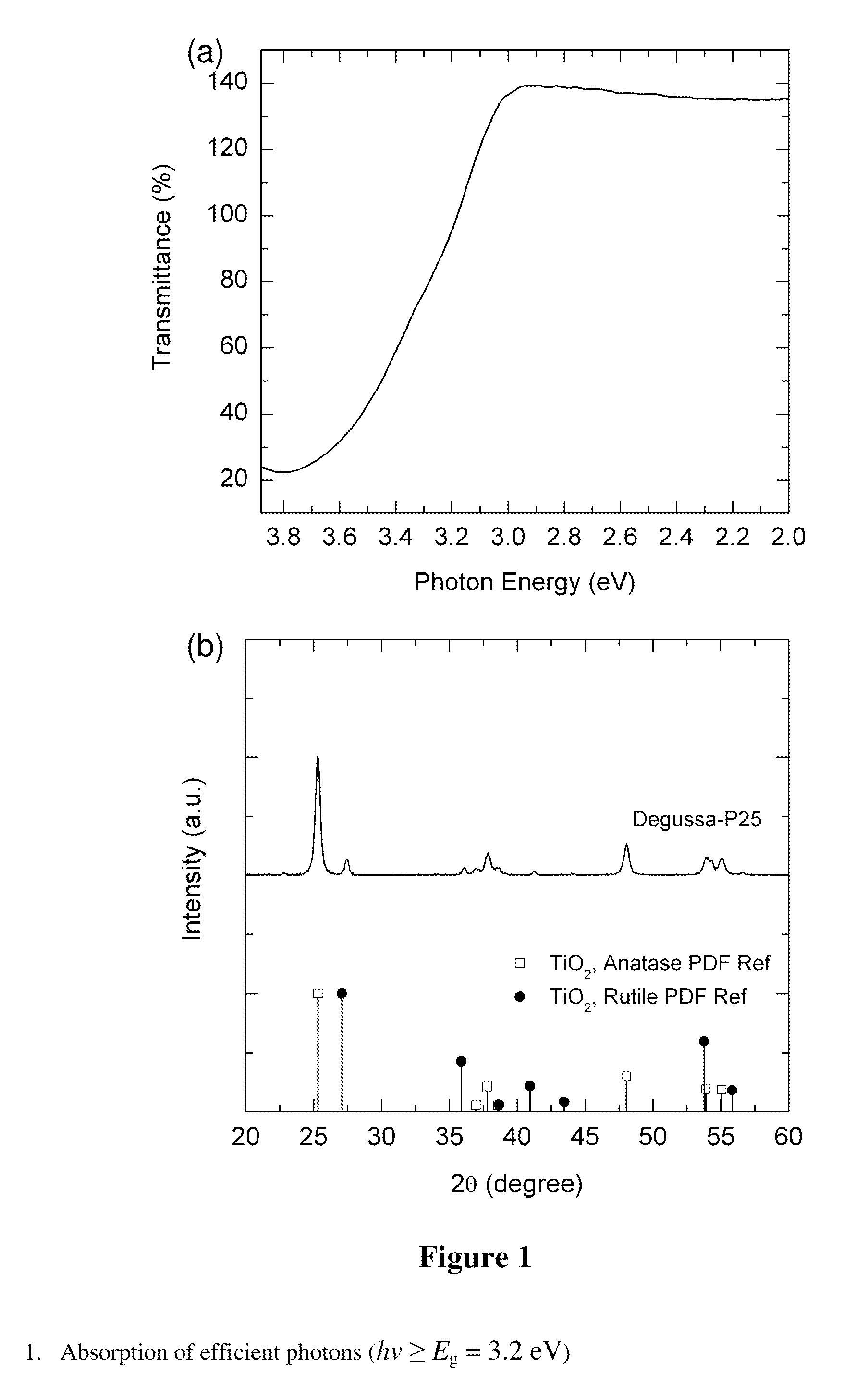Ir-activated photoelectric systems
a photoelectric system and photoelectric technology, applied in the field of photoelectric systems, can solve the problems of low photochemical and photovoltaic efficiency of semiconductors, scale-up problems, and the current photoelectric system has not been able to effectively utilize sun energy, and achieves the effects of preventing or reducing fouling, facilitating integration and adaptation, and facilitating cleaning
- Summary
- Abstract
- Description
- Claims
- Application Information
AI Technical Summary
Benefits of technology
Problems solved by technology
Method used
Image
Examples
examples
[0113]In the present application, IR-to-UV upconversion is demonstrated using as-synthesized NaYF4:Yb—Er, NaYF4:Yb—Tm and NaYF4:Yb—Gd—Tm phosphors. (See FIGS. 12-13.) However, the demonstrated upconversion is produced to varying degrees by any rare earth doped system. Accordingly, the present invention extends to the use if essentially any rare earth doped host material in the photo-electric systems of the present invention. While thermal treatment of as-synthesized phosphors to obtain the IR-to-UV upconverting phosphors is reported to be necessary in the prior art, no thermal treatment was used for preparing the phosphors demonstrated here. Thermal treatment of the phosphors can facilitate and will be beneficial to further enhancements of photoelectric material performance.
Characterization
[0114]Powder x-ray diffraction (XRD) patterns were obtained with a resolution of 0.04° / step and 2 sec / step with the Siemens D500 (Bruker AXS Inc., Madison, Wis.) powder diffractometer (40 kV, 30 m...
PUM
| Property | Measurement | Unit |
|---|---|---|
| Energy level | aaaaa | aaaaa |
| Fraction | aaaaa | aaaaa |
| Fraction | aaaaa | aaaaa |
Abstract
Description
Claims
Application Information
 Login to View More
Login to View More - R&D
- Intellectual Property
- Life Sciences
- Materials
- Tech Scout
- Unparalleled Data Quality
- Higher Quality Content
- 60% Fewer Hallucinations
Browse by: Latest US Patents, China's latest patents, Technical Efficacy Thesaurus, Application Domain, Technology Topic, Popular Technical Reports.
© 2025 PatSnap. All rights reserved.Legal|Privacy policy|Modern Slavery Act Transparency Statement|Sitemap|About US| Contact US: help@patsnap.com



